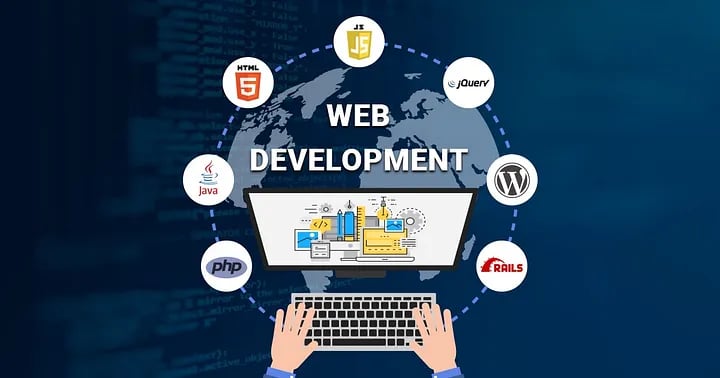
Just knowing what influences Google’s search rankings can give you a significant edge in optimizing your website effectively. In this post, you’ll discover the Google ranking factors for 2025 that will impact your site’s visibility and traffic. Understanding these elements allows you to tailor your content and technical approach, ensuring your site meets the latest standards set by Google. Like Mister Nguyen Agency, focusing on these key factors, you can enhance your SEO strategy and improve your chances of ranking higher in search results.
The Reign of User Experience in Google’s Algorithm

User experience (UX) directly influences how Google ranks your site. Elements like intuitive navigation, engaging content layout, and accessible design work together to reduce bounce rates and increase the time visitors spend on your pages. Prioritizing these factors aligns your site with Google’s evolving goals, as the search engine aims to deliver results that not only match queries but also ensure visitors find value effortlessly and swiftly.
How Page Load Speed Affects Engagement
Pages that load within three seconds reduce bounce probability by up to 32%, according to Google research. Faster loading speeds keep visitors engaged, minimizing frustration and encouraging deeper exploration of your content or products. Optimizations such as image compression, browser caching, and streamlined code are vital techniques to enhance speed—directly impacting your ranking by improving your site’s overall user satisfaction metrics.
The Role of Mobile-First Indexing
Google primarily uses the mobile version of your website for indexing and ranking, reflecting the dominant usage of mobile devices for online searches worldwide. If your site isn’t optimized for mobile, your rankings could suffer, regardless of how well the desktop version performs. Responsive designs, readable fonts, and streamlined mobile navigation help ensure your site meets Google’s mobile-first criteria and retains search visibility.
Mobile-first indexing means Google prioritizes the mobile layout and content during evaluation, even if many users still access your desktop site. Sites with slow or non-responsive mobile versions risk losing substantial visibility. For instance, one study showed a 15% drop in rankings after a site failed to adapt its mobile interface properly. Implementing AMP (Accelerated Mobile Pages) can further boost performance and user experience, translating into better engagement signals and higher SERP placement.
The Evolution of Content Quality and Relevance

Content quality in 2025 hinges not just on keyword density or length but on delivering precise, authoritative answers aligned with user intent. Google’s algorithms increasingly prioritize nuanced understanding, rewarding content that educates, engages, and aligns with topical authority. Your ability to address specific queries with clear, well-researched information elevates your site’s relevancy and impact, setting you apart in crowded search results.
The Rise of E-A-T: Expertise, Authoritativeness, Trustworthiness
Google’s emphasis on E-A-T continues to grow, with algorithms assessing your content creator’s credentials and the website’s reputation. Demonstrating expertise, such as citing accredited studies or author bios, reinforces your authority. Trust signals—like secure site practices and transparent contact information—enhance user confidence, directly influencing rankings, especially in YMYL (Your Money or Your Life) niches like finance and healthcare.
The Impact of Semantic Search on Keywords
Semantic search has transformed how Google interprets keywords, shifting focus from exact matches to contextual meaning. Your content now needs to reflect related concepts, synonyms, and user intent rather than repeating phrases mechanically. Structuring your content around themes and natural language helps Google surface your pages for broader, relevant queries, enhancing your visibility.
Delving deeper, semantic search leverages natural language processing and entity recognition to connect related topics beyond surface keywords. For example, a page about “healthy eating” that also covers “nutritional benefits,” “meal planning,” and “balanced diets” aligns with Google’s understanding of the concept. Incorporating Latent Semantic Indexing (LSI) keywords and structured data enriches your content’s context, ensuring Google’s algorithms index it effectively. This approach not only improves your content’s discoverability but also supports voice search optimization, which relies heavily on natural, conversational language.
Signals of Authority: Backlinks and Domain Trust

Your site’s credibility grows with the quality and trustworthiness of other websites linking to it. Backlinks act as endorsements that boost your rankings, but the value lies in relevance and authority rather than sheer numbers. Search engines place greater emphasis on signals like the linking domain’s history, topical alignment, and link diversity. Trust also amplifies when your domain has a consistent record free from spam or penalties, setting a stable foundation for higher rankings in competitive niches.
The Value of Quality over Quantity in Backlinks
Links from authoritative, niche-relevant websites outperform large volumes of low-quality backlinks, which can trigger penalties. For example, a single backlink from a respected industry leader with a high domain rating (DR) can outweigh dozens from unrelated or spammy sites. You’ll see better ranking improvements focusing on natural link-building strategies—such as guest posts on authoritative sites and organic mentions—than aggressively chasing link volume without regard for context or value.
Understanding Domain Authority Metrics
Domain authority metrics like Moz’s DA or Ahrefs’ DR quantify your site’s perceived strength based on link profiles and other factors. These scores predict your site’s ranking potential relative to competitors. Higher scores generally signal stronger trust and authority, but they are comparative rather than absolute. You can monitor these metrics regularly to gauge the impact of your link-building efforts and adjust your strategy accordingly, aiming to improve both the quality and topical relevance of your backlinks.
Delving deeper, domain authority metrics analyze link equity, the number of referring domains, and link diversity to determine your website’s overall power. Tracking fluctuations in your DA or DR can reveal shifts in your backlink profile’s health—such as losing high-value links or gaining less relevant ones—guiding your outreach and content creation to optimize authority signals. Blending these insights with competitive analysis lets you uncover opportunities for strategic partnerships and content themes that resonate with your desired audience and search engines alike.
The Integration of AI and Machine Learning in Rankings

Google’s use of AI and machine learning now profoundly shapes ranking algorithms by analyzing vast datasets to predict user intent and assess content quality more dynamically. Your SEO strategies need to align with this shift, focusing on nuanced content that AI can recognize as genuinely valuable and trustworthy. These technologies enable continuous adjustments to rankings based on user interaction metrics and behavioral patterns, emphasizing personalized, context-aware search results over generic matches.
How AI is Changing Content Optimization
AI-driven tools analyze content structure, semantics, and user engagement signals to guide your content optimization efforts. Instead of relying solely on keywords, you benefit from AI’s ability to suggest topic clusters and related entities that enrich your pages contextually. Predictive analytics help forecast trending topics, enabling you to create content that aligns with emerging user interests and Google’s evolving understanding of relevance.
The Future of Query Interpretation
Google’s advanced AI models increasingly interpret queries by considering context, intent, and user behavior, rather than just keywords. This shift means your content must anticipate and address complex, conversational search queries. The search engine’s ability to understand synonyms, colloquialisms, and nuanced language variations demands content that mirrors natural language and user dialogue patterns to improve ranking potential.
Delving deeper, the AI-driven future of query interpretation leverages technologies like BERT and MUM, which process language at a near-human level, factoring in context from multiple sources to refine search results. You can harness this by structuring content around natural questions and conversational phrases, ensuring answers are clear and comprehensive. Additionally, multimodal search capabilities allow integrating images, videos, and text cohesively, encouraging you to optimize diverse content formats as part of your SEO strategy.
The Growing Importance of Local SEO Strategies

Local SEO has become a powerful driver for businesses aiming to capture nearby customers in an increasingly digital marketplace. Leveraging localized content, targeted keywords, and geo-specific SEO tactics elevates your visibility in proximity-based searches. As mobile device usage continues to surge, how well you optimize for local queries can directly influence foot traffic and revenue, especially for small to medium enterprises. Enhancing local relevance can set you apart from competitors who neglect this key segment of search optimization, making you an authoritative choice within your community.
Factors Influencing Local Search Rankings
Several factors determine how prominently your business appears in local search results. These include:
- NAP consistency (Name, Address, Phone number) across all online platforms
- High-quality, localized content that integrates neighborhood or city names
- Customer reviews and ratings on trusted sites
- Local backlinks from reputable community or industry sources
- Mobile-friendly website design with fast load times
- Perceiving the significance of proximity to the searcher greatly impacts ranking as Google favors nearby, relevant listings.
The Role of Google My Business in Local Visibility
Google My Business (GMB) serves as a pivotal tool to enhance your local search presence. By verifying and optimizing your GMB profile, you control vital information displayed in Google Search and Maps such as operating hours, photos, and direct customer interactions. Businesses with complete, regularly updated profiles experience up to 70% more clicks than those without. Engaging actively on GMB through posts, Q&A responses, and review management boosts your chances of ranking in the coveted Local Pack.
In addition to basic listing information, Google My Business allows you to showcase special offerings, events, and promotional updates tailored to your community’s interests. Integrating GMB insights with your SEO strategy lets you analyze customer behaviors and preferences in real time, enabling dynamic adjustments. The platform’s direct connection to Google’s search ecosystem means any improvements here immediately influence how prominently and attractively you appear to potential local customers, making it indispensable for local market capture.
Final Words
To wrap up, understanding The Google Ranking Factors in 2025 empowers you to optimize your website effectively. By focusing on elements like page experience, quality content, mobile usability, and secure connections, you can enhance your site’s visibility and attract more organic traffic. Consistently applying these principles ensures your online presence remains strong and competitive. With Mister Nguyen Agency, stay proactive by adapting to updates and continually refining your strategies to meet Google’s evolving expectations and deliver exceptional value to your audience.











